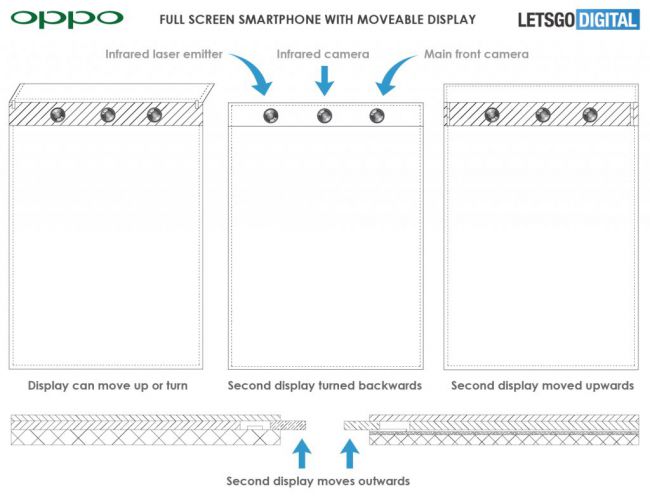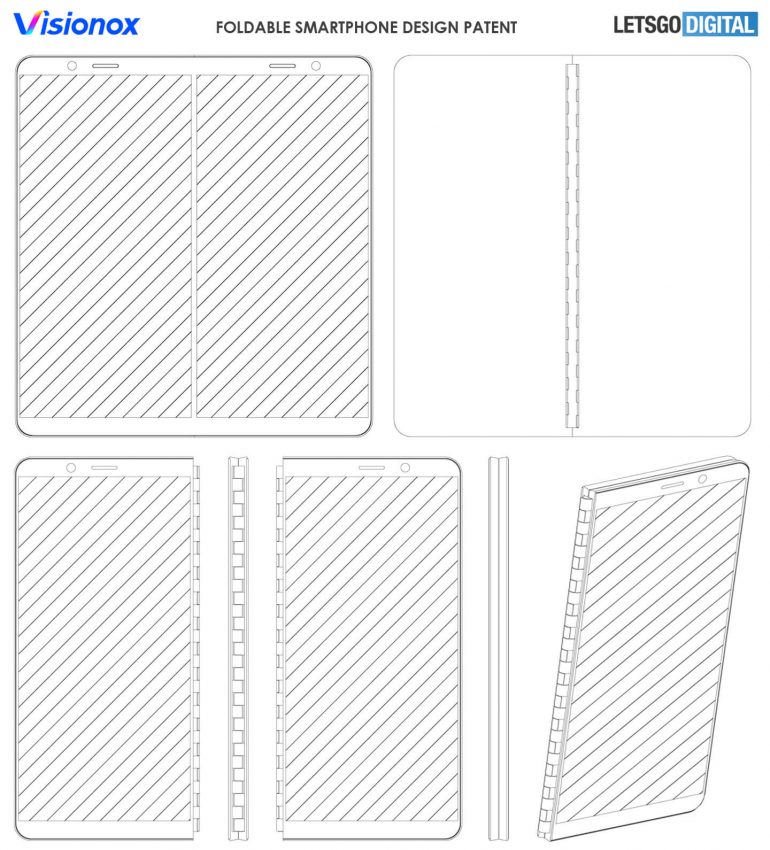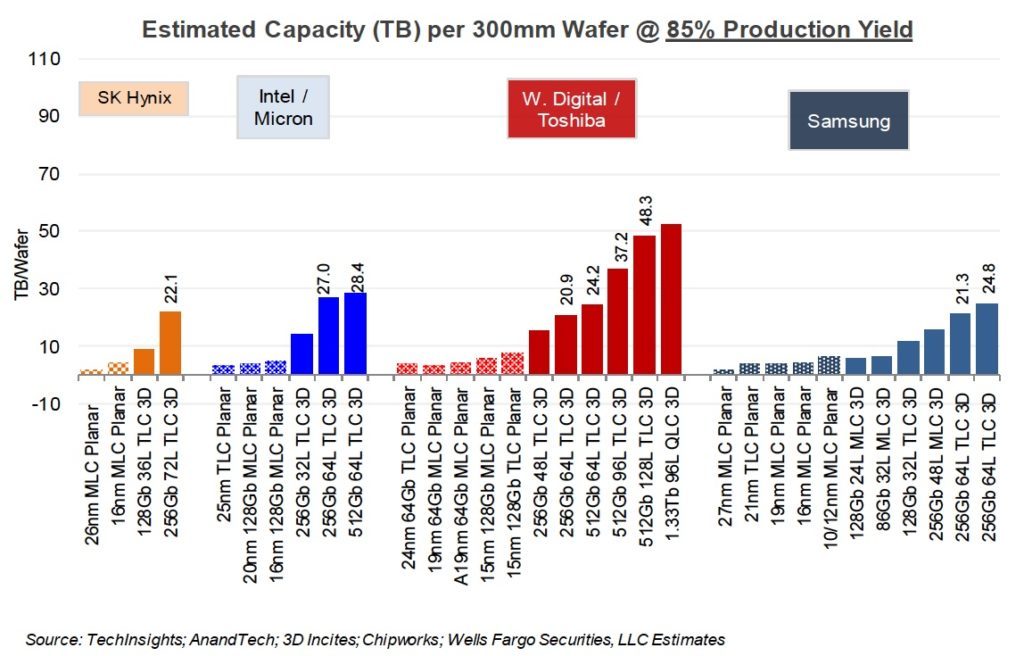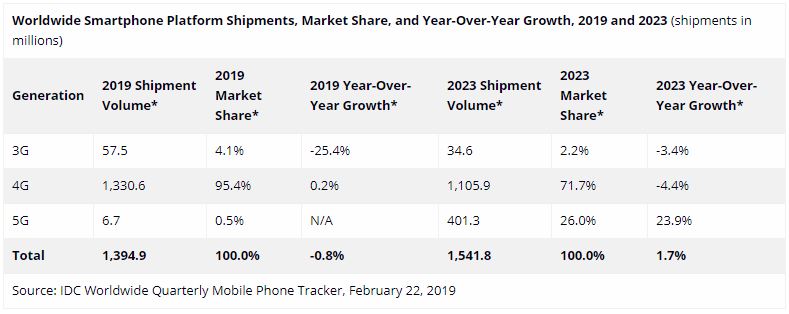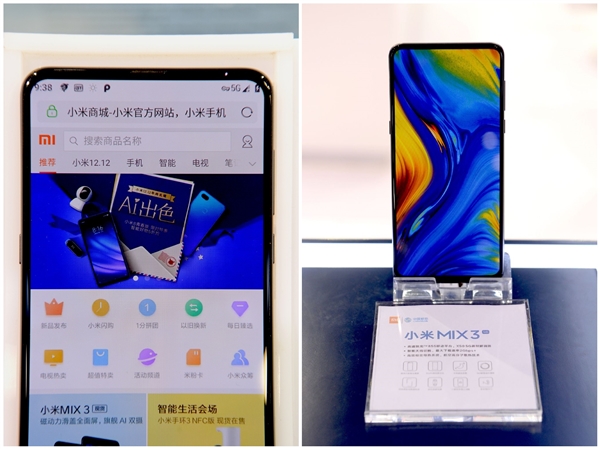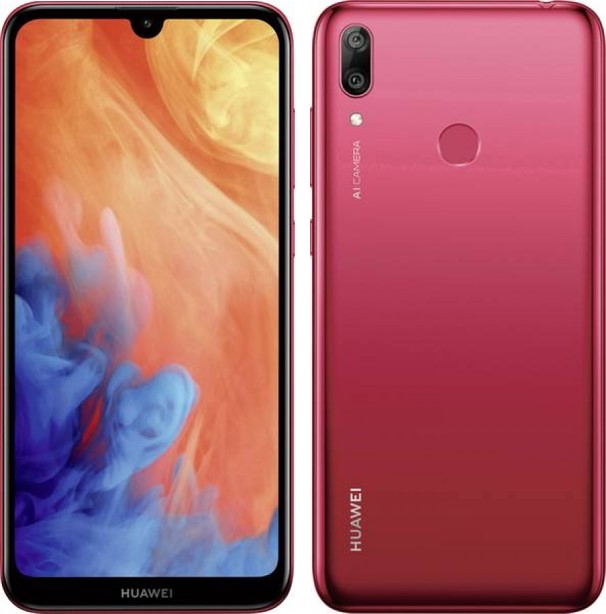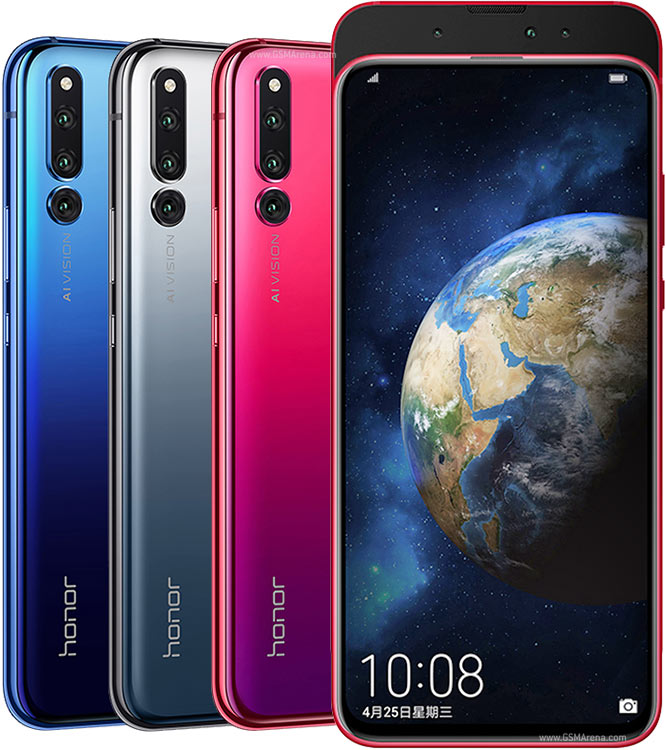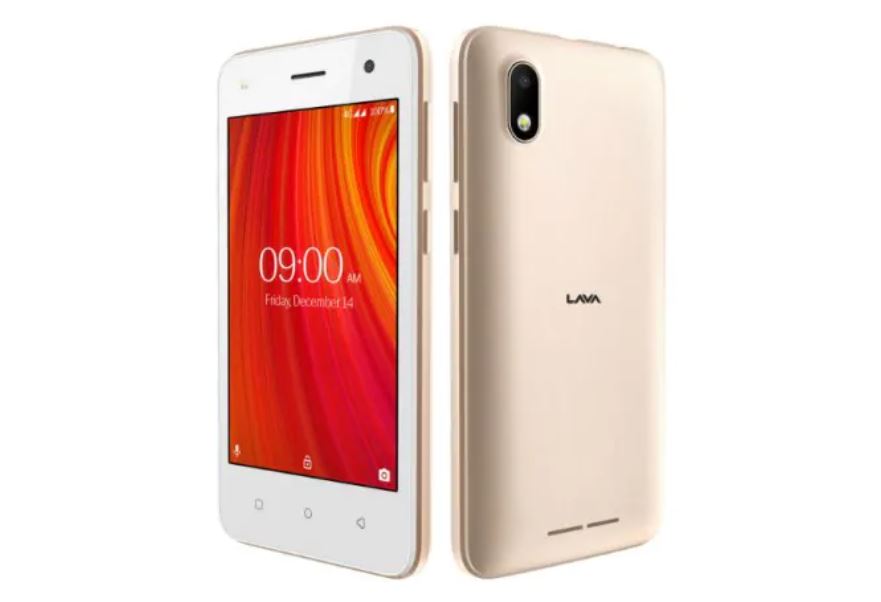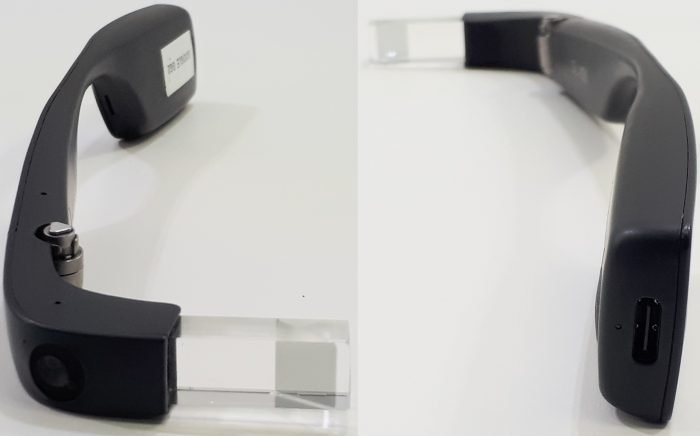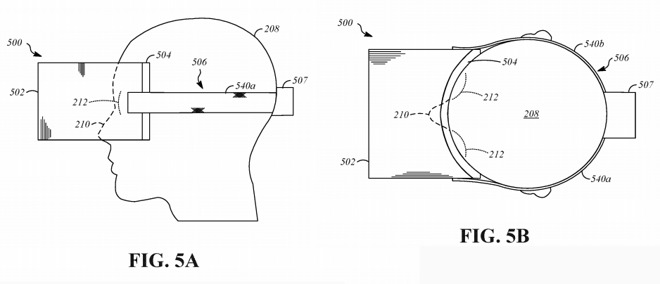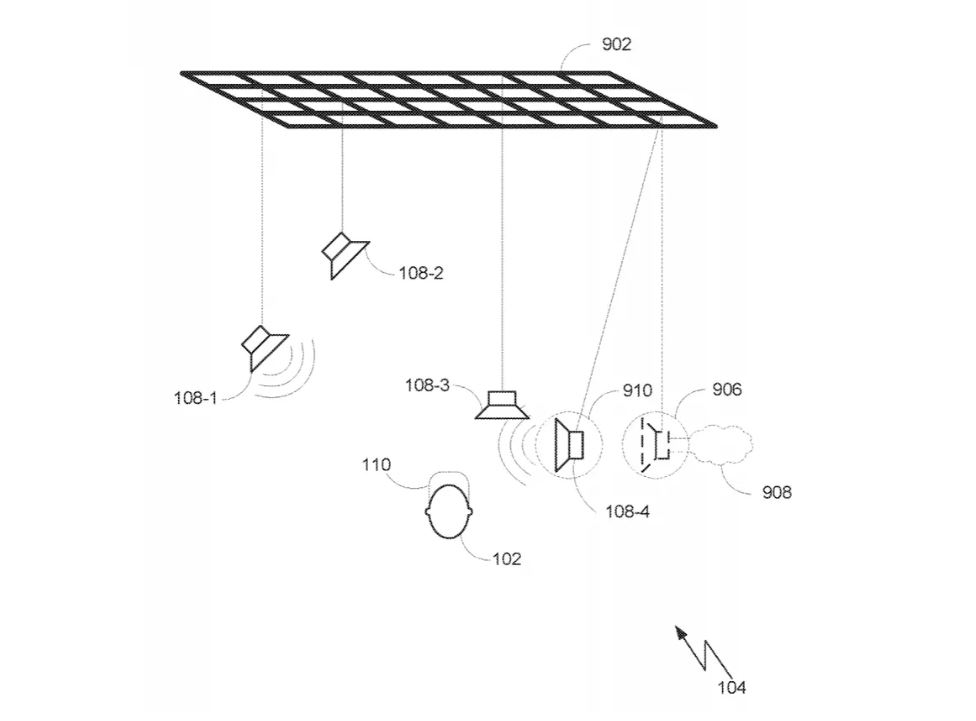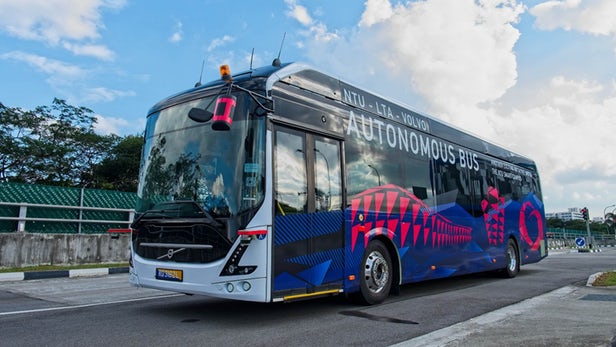
03-08 International Women’s Day: MediaTek to launch 5G-capable chipset in 2019; Samsung is working on a pair of new foldable smartphones; etc.
Chipsets
Finbarr Moynihan, MediaTek’s vice president of corporate sales and business development for the Americas and Europe, has revealed that the company will be announcing a 7nm, 5G-capable chipset in 2019. He has further added that the new chipset is mainly designed for the higher end market and would be better and more capable than Helio P90. (GSM Arena, Android Authority, Huanqiu)
Touch Display
OPPO has submitted to the WIPO (World Intellectual Property Organization), which shows a triple front-camera set-up with a slender, almost bezel-sized, display which rises up above the trifecta of snappers. (CN Beta, TechRadar, Trusted Reviews, Patent Scope, LetsGoDigital)
Samsung Electronics is working on a pair of new foldable smartphones to follow its Galaxy Fold, seeking to seize an early lead in new market segment. It is said to be developing a clamshell-like device, and another that folds away from the user. Samsung forecasts production of at least 1M foldable phones in 2019. (Bloomberg, Apple Insider, CN Beta)
ZTE has filed a foldable smartphone patent with WIPO, which features a disproportional fold with the top section being relatively shorter than the bottom. When folded, a noticeable portion of the larger screen can still be seen. This visible portion of the screen could display important notifications such as phone call alerts. (Gizmo China, LetsGoDigital, CN Beta)
Visionox has a foldable phone in development. Yungu (Gu’an) Technology, a subsidiary of Visionox, filed a design patent with the Global Design Database of the WIPO (World Intellectual Property Office). It is a foldable smartphone, where the display is on the outside. Remarkably, there does not appear to be a flexible display. They are two separate screens, with a small gap in between. (LetsGoDigital, CN Beta, TechGenYZ)
Memory
Western Digital (WD) and Toshiba have developed a 128-layer 3D NAND die with TLC (3bits/cell) cell formatting and 512Gbit capacity. A 128-layer die will be BiCS-5 in Toshiba flash generation naming terminology – BiCS-4 is 96-layer and BiCS-3 is 64-layer. Product might appear in late 2020, with production ramping in 2021. (CN Beta, Block & Files)
TrendForce finds that most contracts are now monthly deals rather than quarterly deals, with Feb 2019 even seeing a most unusual, large down-correction in prices. The current quarterly decline dropped from the originally projected 25% to nearly 30%, resulting in the sharpest decline in a single season since 2011. (CN Beta, TrendForce[cn], TrendForce)
Sensory
Waymo wants to partner with companies that have non-automotive applications for what its self-described “best-in-class” perimeter sensor. Waymo calls out 3 Honeycomb features that make it special: A wide field of view (FOV), multiple returns per laser beam pulse, and zero minimum range. (Digital Trends, Waymo, 163, CCIDnet)
Connectivity
Finnish technology and networking firm Nokia has announced on that it has completed retrenchment discussions and that 280 of its employees in Finland would lose their jobs. (CN Beta, YLE)
Phone
Huawei is asking suppliers to increase shipments by early summer 2019, when production of its latest smartphone model goes into full swing. Murata Manufacturing appears to have received double the usual volume of orders and plans to boost shipments accordingly. Rohm Semiconductor also will increase supplies of integrated circuits and camera-related parts to the Chinese company by around May 2019. (Android Headlines, Asia Nikkei, NTDTV, UDN)
Apple assembly partner Wistron is preparing to expand its iPhone production capabilities into newer models, according to an Indian government official, with the contract manufacturer believed to be moving into assembling the latest Apple releases like the iPhone XS and iPhone XR. A plan by the company to spend INR5,000 crore (USD714.6M) has been approved by the country’s information technology ministry. (CN Beta, Apple Insider, Economic Times)
IDC predicts that in 2019, sales of 5G-ready handsets will represent a paltry 0.5% of the overall sales, which is about 6.7M units. By 2023, the market share of 5G-enabled smartphones is expected to increase to a whopping 26% to about 400M units, which means roughly one out of every 4 smartphone purchases would be a 5G device. (CN Beta, 199IT, Android Headlines, IDC, press, Gizmo China)
Xiaomi CEO Lei Jun has revealed that the company will soon release a 5G mobile phone in China. Xiaomi has recently released a 5G mobile phone in Europe. (GizChina, iFeng)
TF Securities analyst Ming-Chi Kuo is increasing shipping estimates of Samsung Galaxy S10 series from 30M~35M to 40M~45M. He outlines 3 reasons for this: the market’s view on high-end smartphone sales, spec differentiation from Apple iPhone models, trade-in programs, and strong demand in China. (TF Securities, Mac Rumors, GSM Arena, 9to5Mac)
Huawei Y7 (2019) is announced – 6.26” 1520×720 HD+ Dewdrop, Qualcomm Snapdragon 450, rear dual 13MP-2MP + front 8MP, 3+32GB, Android 8.1, 4000mAh, EUR220. (GizChina, Huawei, GSM Arena)
Honor Magic 2 is announced – 6.39” 1080×2340 FHD+ AMOLED, HiSilicon Kirin 980, rear tri 16MP-16MP-24MP B/W + front mechanical slider 16MP-2MP depth-2MP depth, 8+512GB, Android 9.0, under-display fingerprint scanner, face unlock, IPx2 rated, 3500mAh 40W fast charging, CNY5,799. (GizChina, GSM Arena, Appuals)
Lava Z40 Android Go phone is launched in India – 4” 480×800 WVGA TFT, MediaTek MT6737M, rear 5MP + front 2MP, 1+8GB, Android 8.1 (Go Edition), 2250mAh, INR3,499. (Gizmo China, 91Mobiles)
Wearables
Fitbit unveils: Versa Lite – Boats 4+ days battery life, heart rate monitor with SpO2 (blood oxygen) sensor, EUR160 / USD160. Inspire / Inspire HR – Up to 5 days on a charge, 15+ goal-based exercise modes, sleep tracking, USD70 / EUR70 or USD100 / EUR100 (HR model). Ace 2 – To help kids build healthy habits, durable bumper, up to 50m water resistance. (GSM Arena, Fitbit, CN Beta)
Virtual / Augmented Reality
Google is reportedly working on Google Glass Enterprise Edition 2. The device Snapdragon 710, an integrated LTE modem, support for Bluetooth 5.0 and 802.11ac Wi-Fi. And as for its camera, it supposedly has a 32MP sensor that does 4K video captured at 30FPS or 1080p at 120FPS. There’s also 3GB of RAM, and it apparently runs Android Oreo. (CN Beta, Tecno Blog, 9to5Google)
Apple’s patent titled “thermal regulation for head-mounted display” describes it effectively uses a fan to push air through the chamber of the headset where the components are located. Multiple fans can be used to push and pull air through different sections of the component chamber. (Apple Insider, USPTO, PC Pop)
JD.com is using its advanced technology to bring augmented reality (AR) features to a picture book that teaches children how to interact safely with strangers. (CN Beta, Sina, JD)
Home
Samsung subsidiary Harman got a patent to map sounds from virtual reality (VR) games and experiences to one or more robotic speakers. The patent details how the speakers could move and hover around the user with the help of quadcopters or even “vertical gas jet based propulsion mobility platforms” in an attempt to provide better audio in a virtual environment. (The Verge, CN Beta, Techspot, PC Mag, Variety)
Automotive
Nanyang Technological University (NTU) and Volvo Buses have launched a 12m autonomous electric bus in what they said was a world first. The launch comes as part of a development programme between the two, under NTU’s partnership with the Land Transport Authority (LTA) to develop and conduct autonomous vehicle bus trials for fixed routes and scheduled services. (Digital Trends, News 18, Channel News Asia, Inverse, Sohu, CN Beta)
Artificial Intelligence
Google and OpenAI have introduced a new technique called “Activation atlases” for visualizing the interactions between neurons. This technique aims to provide a better understanding of the internal decision-making processes of AI systems and identify their weakness and failures. Activation atlases are built on ‘feature visualization’, a technique for understanding what the hidden layers of neural networks can represent and in turn make machine learning more accessible and interpretable. (CN Beta, The Verge, Pocket Hub, VentureBeat, Activation Atlases)
